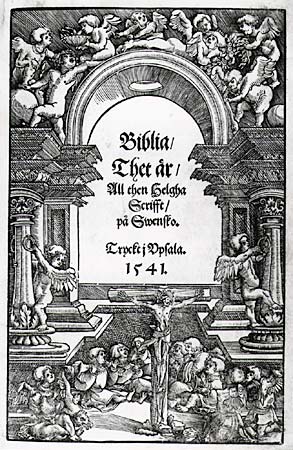|
Färlöv Church
Färlöv Church () is a medieval Lutheran church in Färlöv in the province of Scania, Sweden. It belongs to the Diocese of Lund. History The presently visible church was preceded by a wooden stave church, built during the 11th century. The oldest parts of the presently visible Romanesque church date from about 1180. The twin tower, the nave and the choir form the oldest parts of the church. According to legend, the two towers were constructed by the wife of a local knight. The story goes that the knight went away to fight in a war while his wife was pregnant, and asked his servants to build a tower to the church in case she gave birth to a son. When he returned from the war and saw the two towers, he realised that she had given birth to twins. In reality, twin western towers are not an unknown element in Romanesque architecture, although not known from any other parish church in Scania. While it is unknown who built the church and why, the presence of the twin towers thus do deno ... [...More Info...] [...Related Items...] OR: [Wikipedia] [Google] [Baidu] |
Swedish Language
Swedish ( ) is a North Germanic languages, North Germanic language from the Indo-European languages, Indo-European language family, spoken predominantly in Sweden and parts of Finland. It has at least 10 million native speakers, making it the Germanic_languages#Statistics, fourth most spoken Germanic language, and the first among its type in the Nordic countries overall. Swedish, like the other North Germanic languages, Nordic languages, is a descendant of Old Norse, the common language of the Germanic peoples living in Scandinavia during the Viking Age. It is largely mutually intelligible with Norwegian language, Norwegian and Danish language, Danish, although the degree of mutual intelligibility is dependent on the dialect and accent of the speaker. Standard Swedish, spoken by most Swedes, is the national language that evolved from the Central Swedish dialects in the 19th century, and was well established by the beginning of the 20th century. While distinct regional Variety ( ... [...More Info...] [...Related Items...] OR: [Wikipedia] [Google] [Baidu] |
